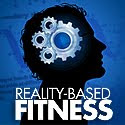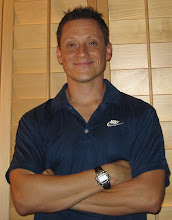
This past weekend, I attended (along with my twin brother Franz and RKC John Vandenbrink both from the San Diego area)) my 5th seminar from NMT Center, the premeire company teaching NMT in North America and now even in Europe and Japan (http://www.nmtcenter.com/). I have also trained in Neuromuscular Therapy from the St. John's Methods in the late 90's and early 2000's and am now pleased to soon be certified from this other prestigious organization.
The seminar covered soft-tissue techniques for the torso and pelvic areas and included soft-tissue release techniques for the following muscles:
*Trapezius
*Posterior Mid-Thorax
*Latissimus Dorsi
*Intercostal Group
*Lamina Groove (on either spine of the spine)
*Pelvic and Sacral ligaments (those that are accessible)
*Erector Spinae (including deeper muscles such as multifidus, etc.)
*Sacrotuberous ligament (part of posterior oblique muscle-sling system)
*Gluteal Group
*Quadratus Lumborum
*Lateral Abdomen (obliques)
*Rectus Abdominus
*Respiratory Diaphragm
*Psoas/Iliacus
In essence, this seminar covered what many today call the "core."
The seminar started on Friday at 1Pm and is the same lecture given before all NMT Seminars that explains the foundational principles that NMT is based upon. It is always open to guests for free to help educate others what NMT is all about. The intstructor for this course was a man named Don Kelley, who has decades of experience in massage, teaching, cadaver dissection, and much more. To say he was a wealth of knowledge would be an understatement. Fortunately, he was also hillarious and had a great sense of humour which made the long weekend much more enjoyable.
One of the first things that these Friday lectures always emphasize is that the body is not a collection of individual "parts," and that the teaching of the NMT techniques as individual muscles is only to aid in learning. Throughout the weekend Don kept mentioning that is important to think "globally" when dealing with specific painful areas and I couldn't agree more.
Many painful conditions are the results of some tightness/restriction or dysfunction often far removed from the site of pain. Trigger points, nerve pain, and visceral dysfunctions come to mind here.
One concept that Don mentioned that really stuck with me was that next to basic survival needs (food, shelter, water, etc.), the body will always try to achieve
and maintain the following:
1)Ease
2)Comfort
3)Pleasure
Additionally, the body always tries to maintain some semblance of balance with the head and neck so that the visual field lines up with the horizon. The body doesn't want to feel dis-oriented or dizzy as this is a threat to survival.
So when one is injured for example, he or she will position him/herself to try to achieve the most amount of ease, comfort, and pleasure (as well as maintain eyes, ears and teeth level with the horizon); even if this leads to compensations elsewhere in the body that can cause pain and injury later. By the time someone comes into your office, they have had so many life "incidents" that will have led to multiple compensations/adaptations that you really don't know how much of the iceberg is looming under the water (see picture at top!).
In essence, "life is cumulative." When adaptations and compensations (which are healthy in a biological sense) cannot occur anymore, de-compensation occurs and eventual injury and/or disease processes will take place.
Another key tenet of NMT is that there are three primary types of stress that are always affecting all of us all the time. They are:
1)Biomechanical Stressors (overuse, misuse, trauma, disuse, congenital, etc.)
2)Biochemical Stressors (nutritional deficiency, ischemia, dehydration, inflammation, toxicity, endorcine imbalance, immune disorder, etc.)
3)Psychosocial (anxiety, depression, unresolved emotional states, somatization, etc.)
All of these factors converge to create our own individual reality of health and living. Often, when trying to improve health/performance and decrease pain, it is necessary to take steps to improve factors in each of the above-mentioned categories. Massage by itself is not always enough. Doing exercises, stretches, joint mobility work, eating better, staying euhydrated (adequately hydrated), fixing ergonomics and movement habits, improving breathing habits, (I could go on and on...) are important. But focusing on just one aspect (i.e. joint mobility work is the current craze right now) of health often misses the "Big Picture."
I mean, who cares if one's joints aren't as mobile and coordinated as possible if that person is de-hydrated, eating a diet of pro-inflammatory foods, not sleeping well and is stressed beyond belief from a bad divorce for example. Isolated joint exercises aren't gonna be my focus with that person. There may be several things this person needs that I CANNOT provide; this is where referal to another practioner comes in handy. Of course I will preach maintaing at least adequate levels of exercise as well as optimizing food and water intake as these key health habits are essential to support the body in a time of distress.
Hopefully, what is starting to become evident is that NMT is based on a big picture approach as well as acknowledging the following six principles (the Friday lecture really explains these thoroughly):
1. Ischemia- this is basically a lack of oxygen (hypoxia) that results from increased vascular constriciton in stressed/strained muscle tissue. Ischemia is a major reason for much of the pain that people experience on a day to day basis.
2. Trigger Points- areas of hyperirritability (usually found in muscles and tendons) that when stimulated, refer various sensations to distant areas of the body. These referal sensations can include pain, burning, numbness, tingling and even itching. It is important to rule out more sinister causes of these symptoms since certain visceral problems will often masquerade as muscle or joint problems.
3. Nerve Compression/Entrapment/Tension -pressure on nerves by either soft tissues (muscle, tendon, ligaments, fascia, skin, etc...) or by osseous structures (bone).
4. Postural Distortion and Movement Imbalances- genetically acquired imbalances (i.e. short leg, hemi-pelvis) and/or poor postural/movement habits (sitting too long in a slumped posture, wearing high-heel shoes) can over time lead to dysfuncitonal compensations that lead to increased pain syndromes. Over time, chronically stressed/strained tissues can become tense, shortened, and fibrotic resulting in permanant changes in bony alingment of the body.
5. Nutritional Factors- deficiencies in essential nutrients (water, protein, essential fatty acids, vitamins, minerals) needed for optimum cellular metabolism or inclusion of substances that are toxic (excessive alcohol, smoking, pesticides, etc..) can increase inflammatory processes in the body leading to increased pain and general poor health.
6. Emotional/Psychological Wellbeing- this refers to how well people mange the stress in their lives. Excessive or poorly managed emotional stress can intensify pain in the body.
2. Trigger Points- areas of hyperirritability (usually found in muscles and tendons) that when stimulated, refer various sensations to distant areas of the body. These referal sensations can include pain, burning, numbness, tingling and even itching. It is important to rule out more sinister causes of these symptoms since certain visceral problems will often masquerade as muscle or joint problems.
3. Nerve Compression/Entrapment/Tension -pressure on nerves by either soft tissues (muscle, tendon, ligaments, fascia, skin, etc...) or by osseous structures (bone).
4. Postural Distortion and Movement Imbalances- genetically acquired imbalances (i.e. short leg, hemi-pelvis) and/or poor postural/movement habits (sitting too long in a slumped posture, wearing high-heel shoes) can over time lead to dysfuncitonal compensations that lead to increased pain syndromes. Over time, chronically stressed/strained tissues can become tense, shortened, and fibrotic resulting in permanant changes in bony alingment of the body.
5. Nutritional Factors- deficiencies in essential nutrients (water, protein, essential fatty acids, vitamins, minerals) needed for optimum cellular metabolism or inclusion of substances that are toxic (excessive alcohol, smoking, pesticides, etc..) can increase inflammatory processes in the body leading to increased pain and general poor health.
6. Emotional/Psychological Wellbeing- this refers to how well people mange the stress in their lives. Excessive or poorly managed emotional stress can intensify pain in the body.
One of the things I really love about NMT as a system, is that it acknowledges ALL of the possible factors that can be involved in a person's pain or dysfunctions. It doesn't claim that massage is the answer for everything and actually goes a long way into explaining all the times and circumstances where massage is NOT appropriate.
All in all it was a great weekend and wonderful learning experience. I picked up a couple of techniques that I know are going to be particuarly effective for my clients (especially an easier way to release the diaphragm)!







1 comment:
Well said Keats! I agree that NMT Center is a great company, highly organized and they put on one heck of a seminar!
I have been using the techniques on some of my clients this week; very effective!
Post a Comment